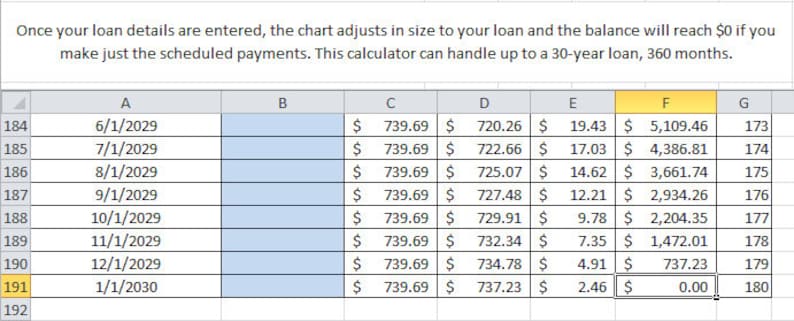Table of Content
The federal government collects your income tax payments gradually throughout the year by taking directly from each of your paychecks. It's your employer's responsibility to withhold this money based on the information you provide in your Form W-4. You have to fill out this form and submit it to your employer whenever you start a new job, but you may also need to re-submit it after a major life change, like a marriage. ERI’s compensation data are based on salary surveys conducted and researched by ERI.
The more someone makes, the more their income will be taxed as a percentage. Of course, for ease of use, our Canadian salary calculator has to make a few assumptions. The most significant is that you aren't married and have no dependents. That means, depending on your circumstances, you may end up paying less in taxes after accounting for your situation and applying credits and deductions.
What is the average salary by the level of education?
An entry level calculator (1-3 years of experience) earns an average salary of $33,147. On the other end, a senior level calculator (8+ years of experience) earns an average salary of $52,273. The money for these accounts comes out of your wages after income tax has already been applied.

Take-home pay in Canada is calculated by taking your pre-tax salary and subtracting federal and provincial taxes. For a clearer look at what most residents of these provinces make, take a look at the table below. We've compiled each province's median salary, based on data from Statistics Canadafor 2020. That means that the numbers represent Canadian salaries before taxes, contributions, and premiums have been applied.
Employment income
Keep in mind that only $500 in an FSA can roll over from year to year. In other words, you need to actually use whatever you put in your FSA, or you’ll lose those funds. When looking at tax brackets, remember that the tax rate is only applied to that specific tax rate. In Quebec, your take-home pay is calculated by taking your annual pre-tax, or gross, salary and subtracting federal taxes and provincial taxes applied by Quebec. Capital gains have an inclusion rate of 50% in Canada, which means that you have to include 50% of your capital gains as income on your tax return. On the 50% of the gains, you’ll be taxed between 13.76% and 26.65%, depending on the amount of income you’ve earned over the course of the year.
If you make $52,000 a year living in the region of Ontario, Canada, you will be taxed $14,043. That means that your net pay will be $37,957 per year, or $3,163 per month. Your average tax rate is 27.0% and your marginal tax rate is 35.3%. This marginal tax rate means that your immediate additional income will be taxed at this rate. For instance, an increase of $100 in your salary will be taxed $35.25, hence, your net pay will only increase by $64.75. For example, if you pay any amount toward your employer-sponsored health insurance coverage, that amount is deducted from your paycheck.
What is the minimum wage in Canada?
Also known as payroll tax, FICA refers to Social Security tax and Medicare tax. Whether a person is an employee or an independent contractor, a certain percentage of gross income will go towards FICA. In the case of employees, they pay half of it, and their employer pays the other half. Independent contractors or self-employed individuals pay the full amount because they are both employees and employers. This is one of the reasons why independent contractors tend to be paid more hourly than regular employees for the same job. Most U.S. cities and counties do not impose this tax, but some do, affecting approximately 10% of the total U.S. population.
Loans for postgraduate study are repaid through the Postgraduate Loan plan. During the Coronavirus outbreak, the government have said that they will subsidise employers' costs to pay staff who are not working and are instead placed on "furlough". The government subsidy is limited to 80% of the employee's salary, or £2,500 per month, whichever is the lower. To make sure this cap is applied to your calculations, tick the box. Along the same lines, you can use pretax money to take advantage of a health savings account or flexible spending account if your employer offers them. You can pay for medical-related expenses like prescriptions or co-pays from these accounts.
Take-Home-Paycheck Calculator
The amount of taxes your employer deduct from your paycheck is withholding tax. It is typically based on federal and provincial marginal tax rates. If you live in a state or city with income taxes, those taxes will also affect your take-home pay. Just like with your federal income taxes, your employer will withhold part of each of your paychecks to cover state and local taxes. Your employer looks to the information that you provide on your W-4 form to determine how much should be taken out of your paycheck for taxes.
Figure out which tax bracket you’re in (federally and provincially with Revenu Québec). Tax brackets are also known as the marginal tax rates for federal and provincial taxes. Tax withholding is the money that comes out of your paycheck in order to pay taxes, with the biggest one being income taxes.
That’s because your employer withholds taxes from each paycheck, lowering your overall pay. Because of the numerous taxes withheld and the differing rates, it can be tough to figure out how much you’ll take home. You can easily estimate your net salary, or take-home pay, using HelloSafe’s calculator above. This tool will calculate both your take-home pay and income taxes paid per year, month, two-week pay period and day.

Of course, if you opt for more withholding and a bigger refund, you're effectively giving the government a loan of the extra money that’s withheld from each paycheck. You could also use that extra money to make extra payments on loans or other debt. Federal income tax rates range from 10% up to a top marginal rate of 37%.
You can pay using your Visa, Mastercard, or Interac debit card from the CRA’s website. There are approximately 50 tax credits that Revenu Quebec offers. These credits relate to parents and future parents (including single-parent families), loss of independence, students and recent graduates, among others. Sources of income that are deemed to be “other income” are taxed at the same Québec tax rate as your employment income. Long term capital gains are taxed based on the marginal rate your income falls into.

Luckily, when you file your taxes, there is a deduction that allows you to deduct the half of the FICA taxes that your employer would typically pay. The result is that the FICA taxes you pay are still only 6.2% for Social Security and 1.45% for Medicare. If the idea of a big one-off bill from the IRS scares you, then you can err on the side of caution and adjust your withholding.
What are the tax brackets in Quebec?
You'll then see an estimate of your salary after-tax as well as how much you may owe in taxes. Montana has a progressive income tax system with seven income brackets that boast rates ranging from 1.00% to 6.90%. All taxpayers in Montana are subject to the same brackets regardless of their filing status.

You’ll be asked your employment income (including self-employment income), your RRSP contributions or deductions, and any other income gains you may have made in the year. For those who do not use itemized deductions, a standard deduction can be used. The standard deduction dollar amount is $12,950 for single households and $25,900 for married couples filing jointly for the tax year 2022. Taxpayers can choose either itemized deductions or the standard deduction, but usually choose whichever results in a higher deduction, and therefore lower tax payable. When you're done, click on the "Calculate!" button, and the table on the right will display the information you requested from the tax calculator.

No comments:
Post a Comment